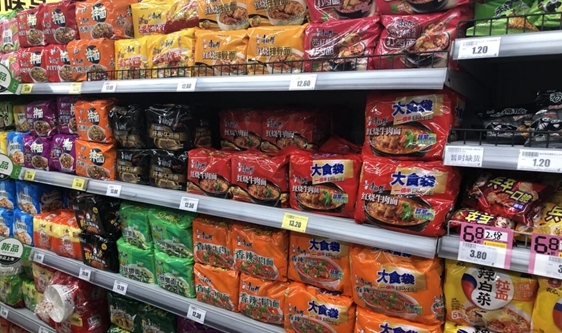Recently, due to special social conditions both domestically and internationally, the number of people staying at home has gradually increased. Especially abroad, the demand for fast food products such as instant noodles is expanding. An industry insider said that nowadays, the popularity of instant noodles in China continues to rise in Africa and is becoming a local “hard currency”. Faced with the expansion of the export market, instant noodle production enterprises also need to understand the differences in demand in various markets, improve the flexible production capacity of production lines, and meet the needs of different overseas markets.
According to statistical data released by the General Administration of Customs, in the first half of this year, China’s cross-border e-commerce exports grew by as much as 28.7%, far exceeding the overall growth rate of foreign trade, providing stable support for China’s foreign trade industry. Among them, the export of instant noodles shows a clear growth trend. It is understood that in the first half of this year, the number of overseas buyers of instant noodle products in China increased by 106% year-on-year, and the number of inquiries increased by 60% year-on-year.
However, the demand for instant noodles in overseas and domestic markets is different, and the preferences for instant noodles vary in different regions overseas. According to big data analysis on a certain e-commerce platform, developed countries such as Europe and America place greater emphasis on the health of instant noodles and prefer products with low sugar, low calorie, zero fat, and zero carbon water; Consumers in Southeast Asia and Africa are more in need of products with localized flavors and larger pancakes. Therefore, production enterprises need to understand the demand for products in different overseas markets and use flexible production lines to achieve multi variety and highly flexible production methods.
The instant noodle production line mainly consists of three main parts: the pastry production line, the dehydrated vegetable production line, and the sauce packaging production line. The production equipment of different production lines is also different. The pastry production line usually consists of kneading machines, curing machines, composite rolling machines, steaming machines, cutting and sorting machines, frying machines, air-cooled machines, and other equipment; The dehydrated vegetable production line includes equipment such as cleaning machines, vegetable cutters, and hot air dryers; The sauce packaging production line requires equipment such as a mixing pot and thickener.
However, according to different consumer demands, there may also be some changes in the production process of the product. For example, in non fried instant noodles, the frying process will be changed to a drying process, which no longer requires a fryer, but requires further drying with drying equipment; In the product, the vegetable drying process will be changed from hot air drying to freeze-drying. Therefore, when the types of products produced are diversified, it is quite challenging for the enterprise’s production scheduling ability.
At the same time, there are higher requirements for the flexible productivity of production equipment. Currently, in food production, food enterprises have increasingly high requirements for the efficiency, production capacity, and flexibility of production machinery. Only when the performance of food machinery is strong enough, can product inputs, production paths, packaging and other data be adjusted at any time according to the production plan of the enterprise, and the production line can be quickly transformed, thereby achieving the goal of flexible production.
In addition to meeting the production scheduling needs of enterprises, flexible production of food machinery can also help production enterprises achieve rapid restructuring of production systems, eliminating the time and cost of equipment reassembly or manual changes to production lines. At the same time, some intelligent devices can also collect production data through sensors and conduct real-time analysis through big data analysis systems, further optimizing production resource allocation and achieving intelligent control of various production processes.
In this year’s export market, instant noodle products have become popular. How can instant noodle manufacturers shorten the production cycle of their products while maintaining a diverse range of product varieties, in the face of different consumer habits in different markets? This requires production enterprises to introduce higher performance intelligent food machinery, achieve flexible production, and form an efficient and highly flexible production system.
Post time: Dec-29-2023

